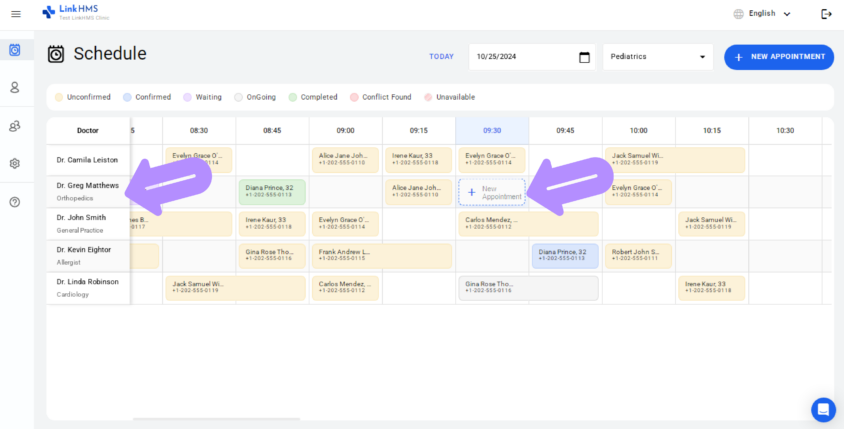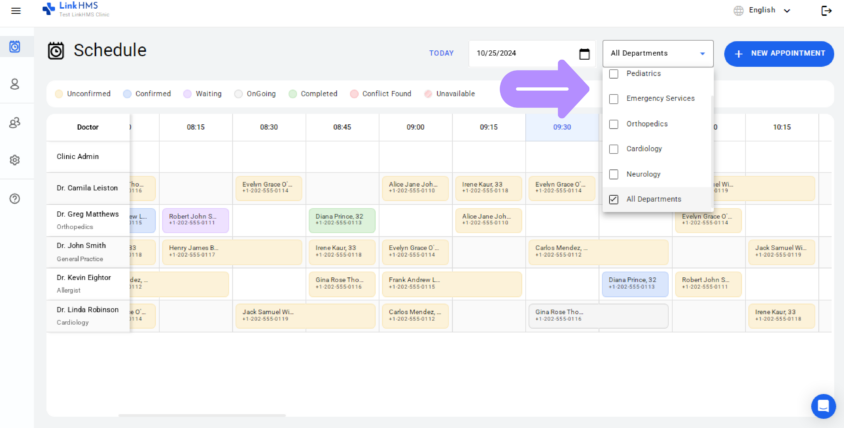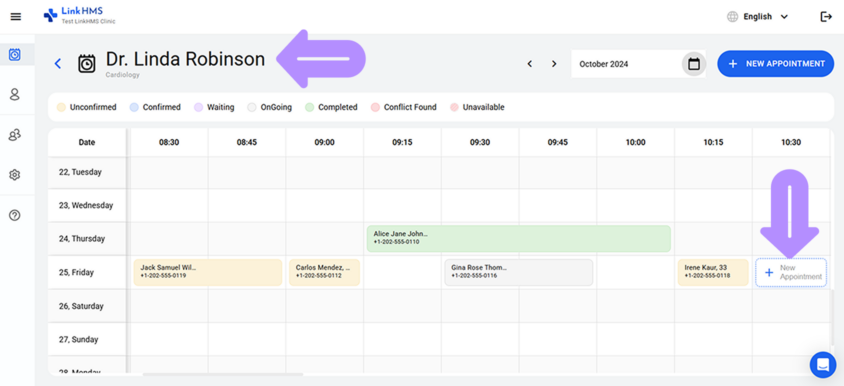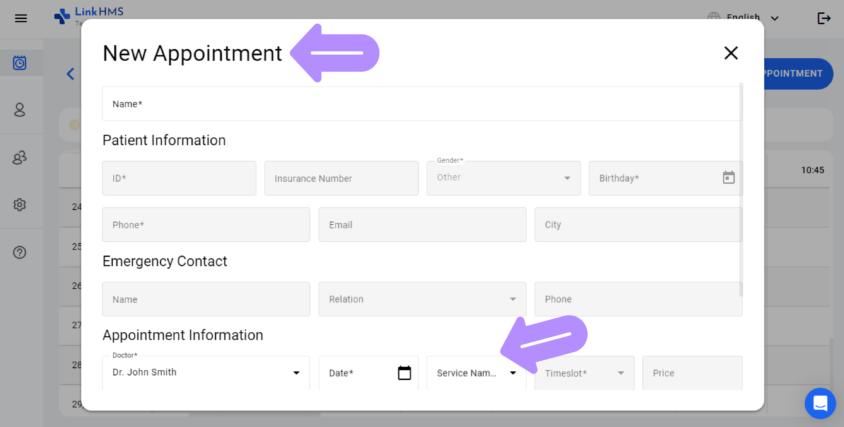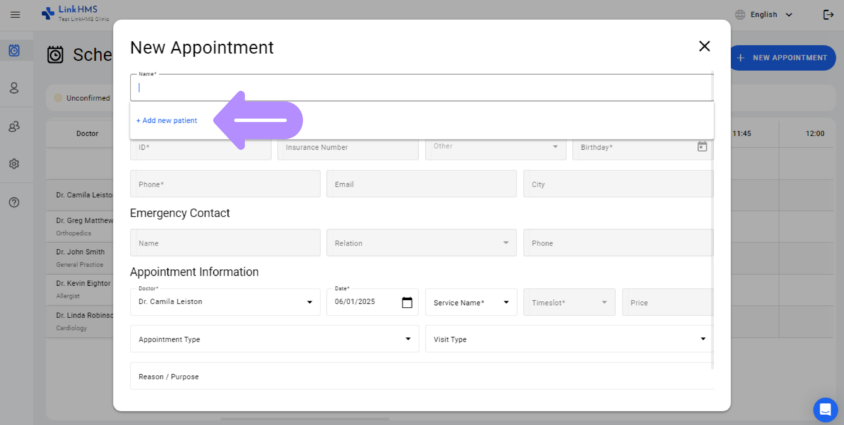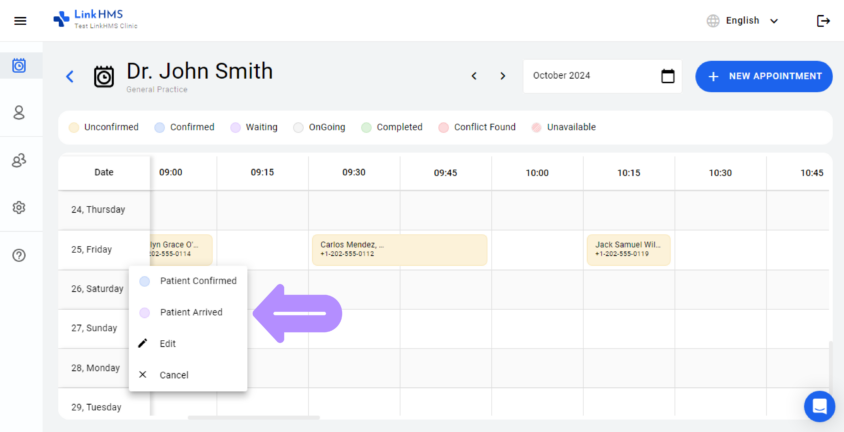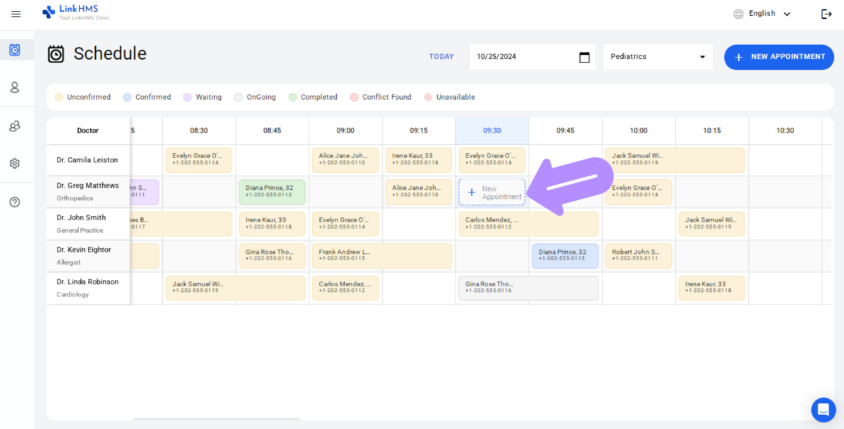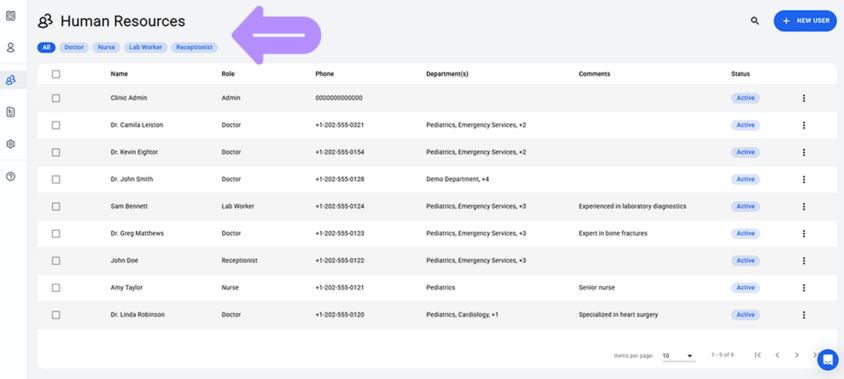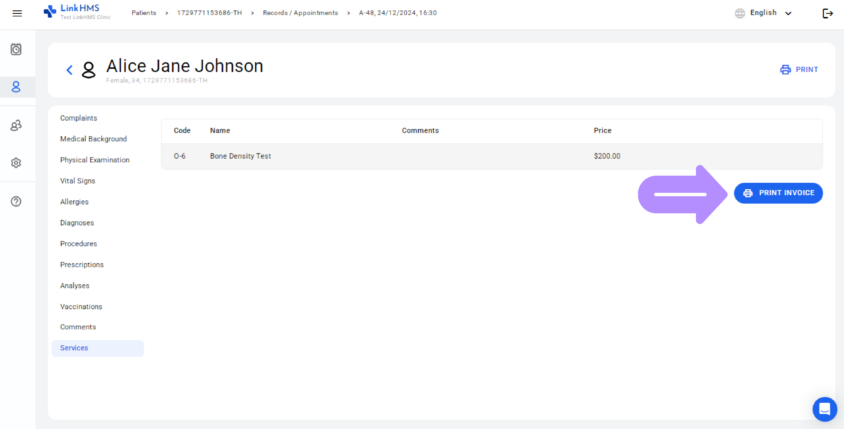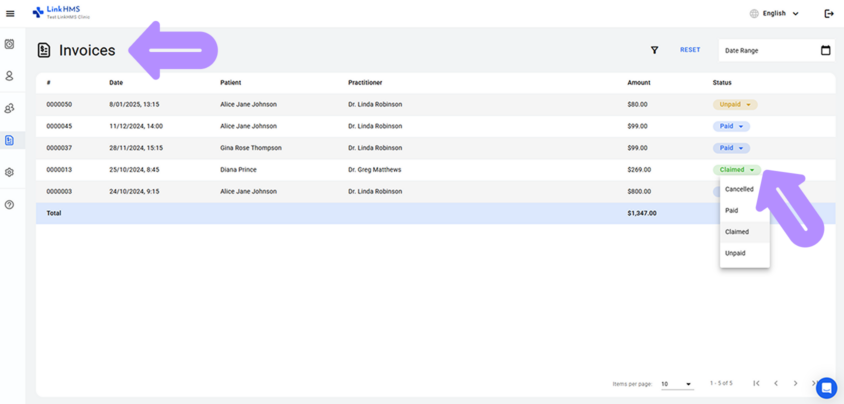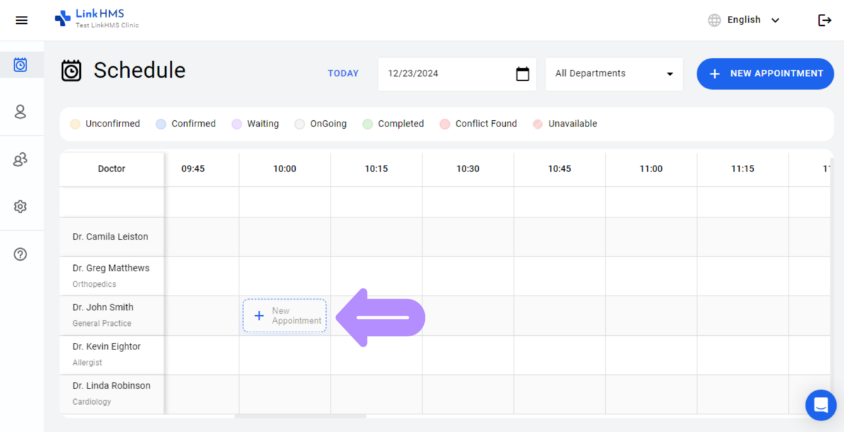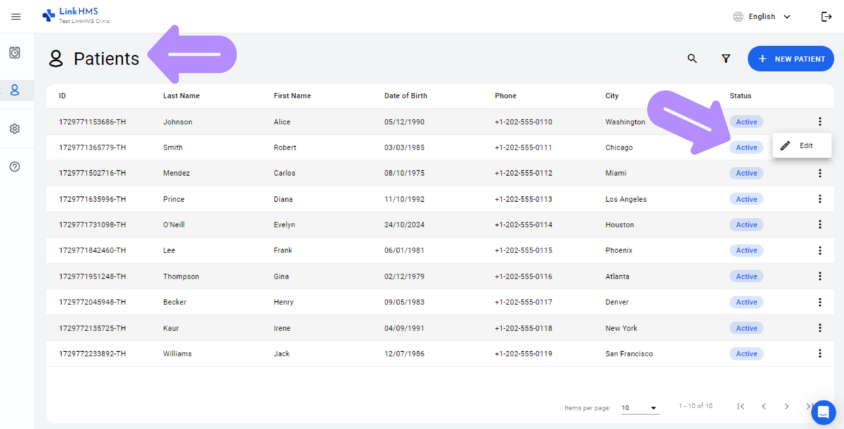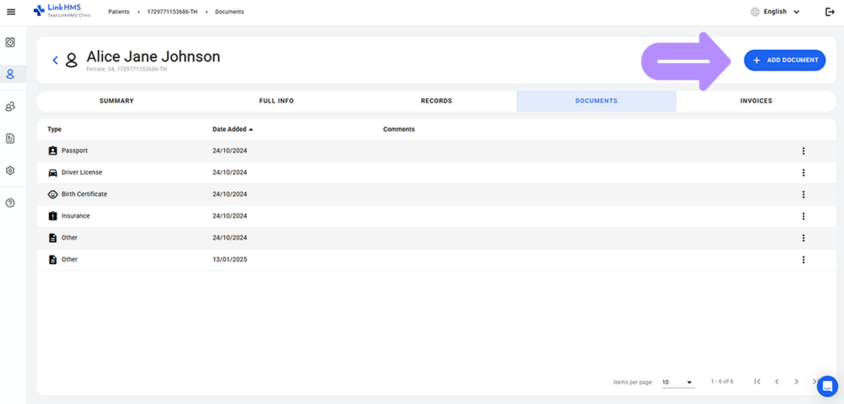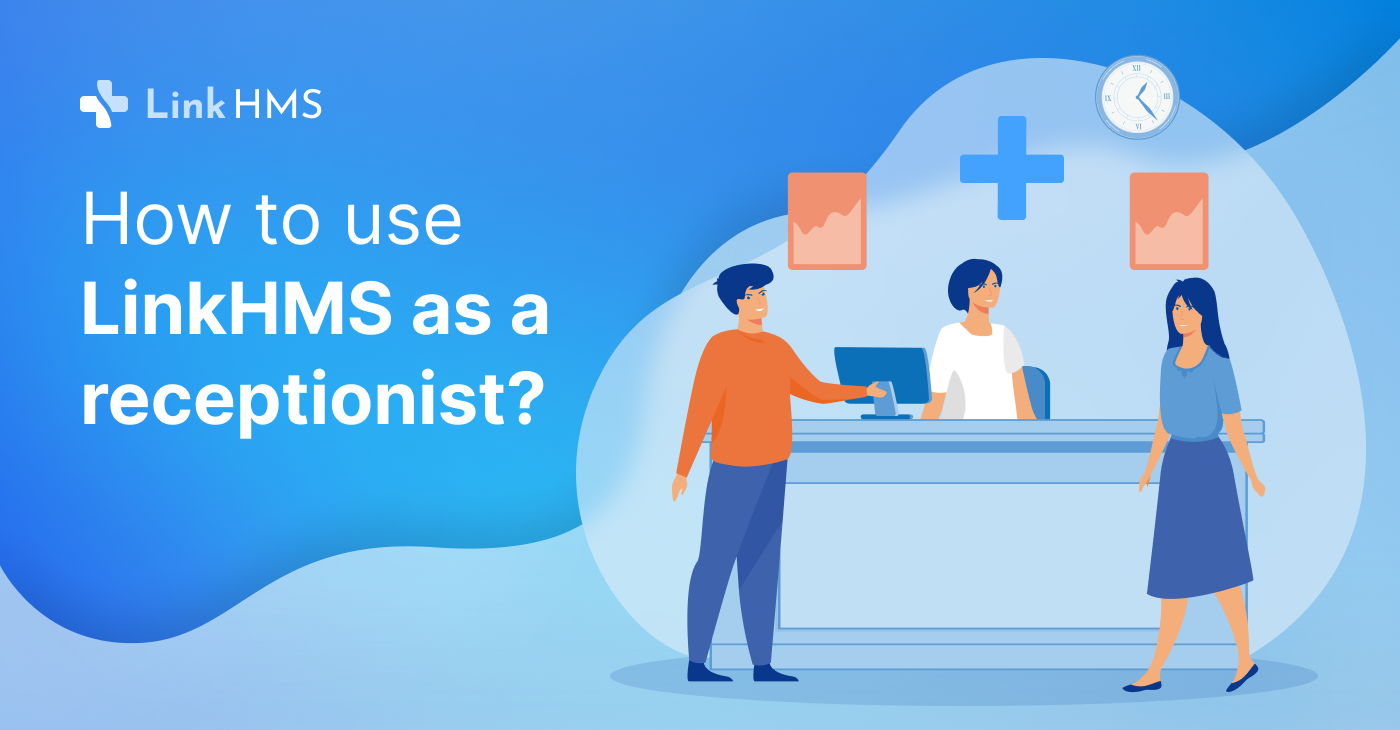
Continuing the series of articles on user roles in LinkHMS, let’s draw special attention to Receptionists. Regardless of your clinic specifications, it’s sometimes hard to imagine many daily clinic tasks without this staff member. Their role embraces varying areas, from managing patient interactions to completing administrative operations.
We suggest going through the standard clinic’s workflow and discovering different tasks the Receptionist can perform in LinkHMS.
The user role of the Receptionist involves both initiating the patient journey and ending visits. The specifications of the position require an easy-in-use HMS with functional capabilities to coordinate the patients’ appointments from start to finish.
The well-structured visit flow greatly depends on organizing the initial steps. When the patient refers to your clinic, the Receptionist has to find the open timeslot and schedule the visit with the appropriate Doctor.
Therefore, our scheduling module provides a real-time view of doctor availability, existing appointments, and potential free timeslots. The Receptionist can search for available slots not only by date but also by department to schedule visits with Doctors of the required specialty.
Also, the Receptionist often uses the functionality to check the Doctor’s schedule separately. It’s especially helpful for returning patients who would like to book an appointment with a specific Doctor.
Once the Receptionist locates a suitable slot, they assign the patient and record the booked appointment in the clinic and doctor’s schedule.
LinkHMS offers unified functionality for phone-arranged visits, follow-ups, and walk-in appointments to follow the same workflow and reduce the receptionists’ workload.
When scheduling visits for new patients at your clinic, the Receptionist also creates patient profiles within the same tab. For returning patients, the record is pulled automatically and can be easily found by patient name.
After filling in the required visit details, the Receptionist confirms the appointment and updates the status to indicate when the patient arrives. This step ensures that other medical staff is instantly informed of the patient’s presence and can prepare for the upcoming consultation.
When the Nurse or the Doctor picks up the visit flow, the Receptionist returns to managing other patient check-ins, scheduling, or administrative tasks. Besides, they organize the live queue and find open slots for walk-in patients through the real-time updates in the Schedule tab.
In addition, the Receptionist has quick access to the Human resources module. It contains valuable records on clinic staff members like roles, contacts, working hours, etc. This information can help contact the required specialist or check on temporary changes in the schedule.
Once the Doctor ends the appointment, the Receptionist is responsible for completing all the post-visit operations. They get notified of the updated visit status so they can generate the invoice and present it to the patient upon arrival at the desk.
Besides, Receptionists are provided with the additional functionality to manage invoices. It collects all the invoices so they can update the payment status once the invoice is settled. It helps maintain accurate financial records, track payments, and reduce the administrative workload.
Follow-up scheduling is a part of the post-visit workflow. At the request, the Receptionist coordinates available timeslots to book the next visit. It significantly contributes to continuity of care and keeps patients on track with their treatment plans.
Receptionists have access to patient data in case they need to review visit summaries, print related records, or update patient info.
The Patients tab contains the full list of the clinic’s patients, each organized under an individual ID number for easy identification.
This centralized database helps Receptionists quickly search for certain patient records, view more detailed information, update documents, and much more. LinkHMS allows your staff to focus on more personalized care and improved patient experience.
This user role in LinkHMS is introduced to support smooth clinic operations and improved visit flow. As a result, it becomes easier for your Receptionists to work toward establishing smooth coordination between patients, medical staff, and clinic administration.
For more insights, we recommend checking our separate guides on user roles within LinkHMS and how they interact with one another.
How to use LinkHMS as a doctor?

